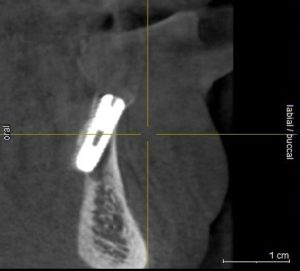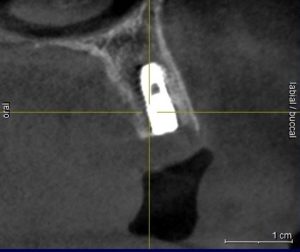SIMPLE IMPLANTS
In implant treatment, first of all, the patient’s general examination is performed. The condition of the jawbone and the bone density in the area to be implanted are determined by taking a panoramic or, if necessary, tomography x-ray of the jaw.

According to this radiographic and intraoral examination evaluation, the length and width of the implant to be applied and the place to be applied are determined precisely and the operation phase is started. In the application, first the bone is reached through the incision made in the gingiva. According to the implant size, the jawbone is drilled and the implant is screwed. The implantation time is approximately between 15-25 minutes.
IMPLANTS APPLIED WITH ADVANCED SURGERY
IN CASE OF BONE DEFICIENCY

In implant treatment, in cases where the bone density and amount are not suitable for the implant, bone grafting is applied and the area is expected to ossify, and the implants are placed after the ossification takes place. In order to pass the prosthesis phase, the implant must fuse to the jawbone. This period varies between 2-3 months. After the implant integrates with the jawbone, it is time to prepare the prostheses. After the measurement and color targeting taken from the mouth, the prostheses are prepared by the technician in the porcelain laboratories in accordance with the real teeth and in an aesthetic way, the final shape is given after the trials in the patient’s mouth, and in the final stage, the prostheses are placed on the implant by screwing or sticking.
IMPLANT TREATMENT WITH 3D TOMOGRAPHY
In implants applied with panoramic (2D) imaging technique, only the vertical dimension (height) and width of the bone can be calculated, and the thickness of the bone cannot be determined with this imaging. There is a high probability of incorrect application in implants to be applied without obtaining bone thickness.

In dental themographies, on the other hand, since the height and width obtained in panoramic imaging, as well as the bone thickness are obtained in imaging, the margin of error in its applications can be reduced to a minimum.

All on Four
What is All On Four Treatment?
All on Four Treatment It is a technique that is applied to patients who cannot use prostheses due to excessive bone loss and that the patient can obtain and use their temporary prosthesis in one day. Bone resorption is generally less in the anterior region.
With this technique, it is a treatment approach that allows the rehabilitation of completely edentulous patients by placing only 4 implants in each jaw. This technique keeps the jaw bones healthy and prevents further bone resorption. The All on 4 technique is a fast, reliable and natural-looking treatment alternative for patients who want implants but do not have enough bone.
What are the Advantages of All on Four Treatment?
* It is a short treatment approach that is more easily tolerated by the patient, eliminating bone grafting, which is invasive, expensive and a long-term treatment for the patient. Full mouth rehabilitation takes approximately 2 hours.
* Bone graft is an ideal treatment option for patients with contraindications for diabetes, osteoporosis or other health problems.
* Temporary fixed prosthesis implant placement is done in one day, providing great convenience to the patient. Traditional techniques often involve multiple surgeries and may take more than a year to complete.
* Due to the low number of implants, the cost is more suitable than conventional implant treatment.
* It is applied with personalized planning. Thus, it provides a more aesthetic smile aesthetic.
* It is easier to clean than conventional implant treatment.








